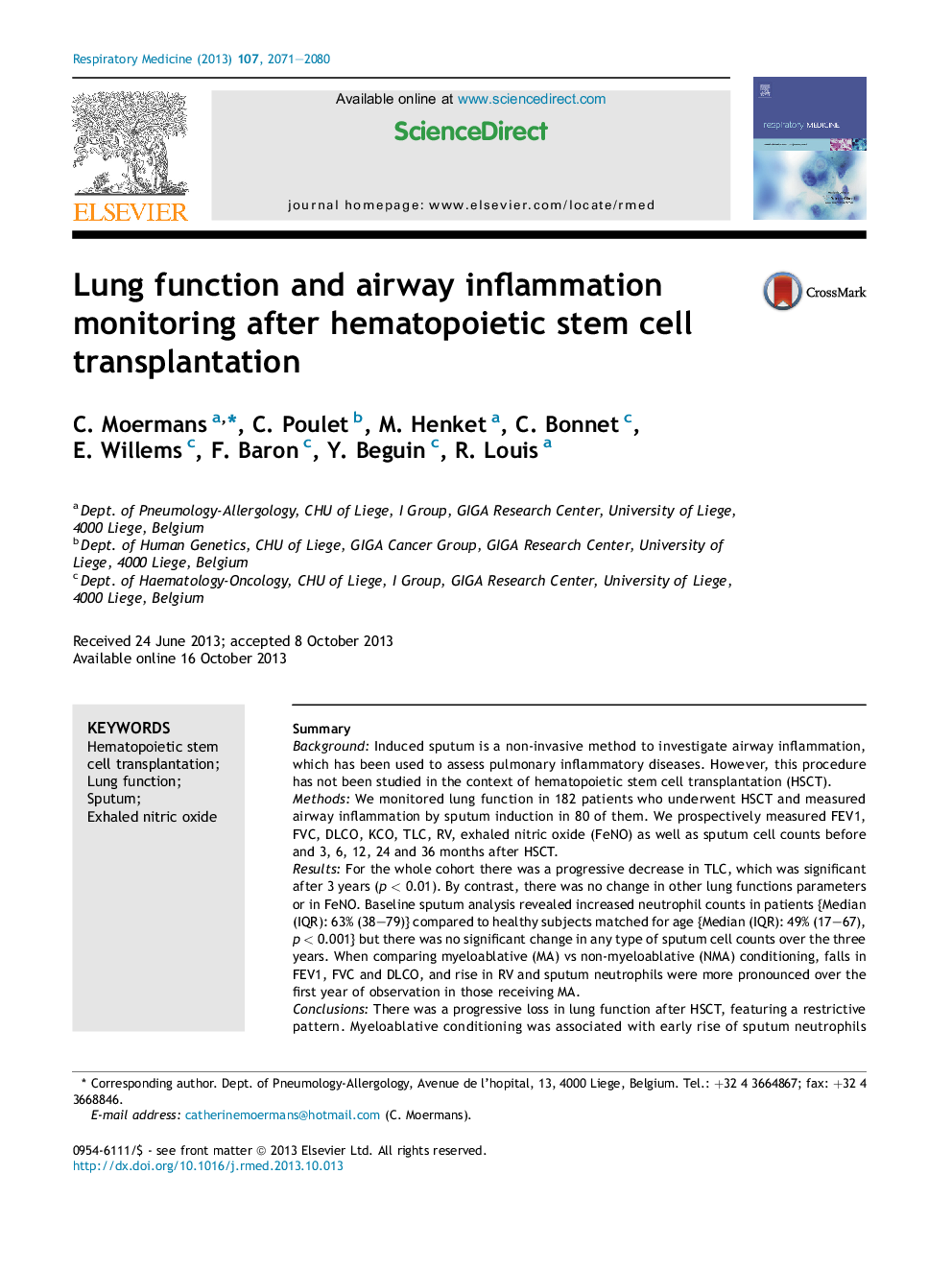| Article ID | Journal | Published Year | Pages | File Type |
|---|---|---|---|---|
| 6241603 | Respiratory Medicine | 2013 | 10 Pages |
SummaryBackgroundInduced sputum is a non-invasive method to investigate airway inflammation, which has been used to assess pulmonary inflammatory diseases. However, this procedure has not been studied in the context of hematopoietic stem cell transplantation (HSCT).MethodsWe monitored lung function in 182 patients who underwent HSCT and measured airway inflammation by sputum induction in 80 of them. We prospectively measured FEV1, FVC, DLCO, KCO, TLC, RV, exhaled nitric oxide (FeNO) as well as sputum cell counts before and 3, 6, 12, 24 and 36 months after HSCT.ResultsFor the whole cohort there was a progressive decrease in TLC, which was significant after 3 years (p < 0.01). By contrast, there was no change in other lung functions parameters or in FeNO. Baseline sputum analysis revealed increased neutrophil counts in patients {Median (IQR): 63% (38-79)} compared to healthy subjects matched for age {Median (IQR): 49% (17-67), p < 0.001} but there was no significant change in any type of sputum cell counts over the three years. When comparing myeloablative (MA) vs non-myeloablative (NMA) conditioning, falls in FEV1, FVC and DLCO, and rise in RV and sputum neutrophils were more pronounced over the first year of observation in those receiving MA.ConclusionsThere was a progressive loss in lung function after HSCT, featuring a restrictive pattern. Myeloablative conditioning was associated with early rise of sputum neutrophils and greater alteration in lung function over the first year.
